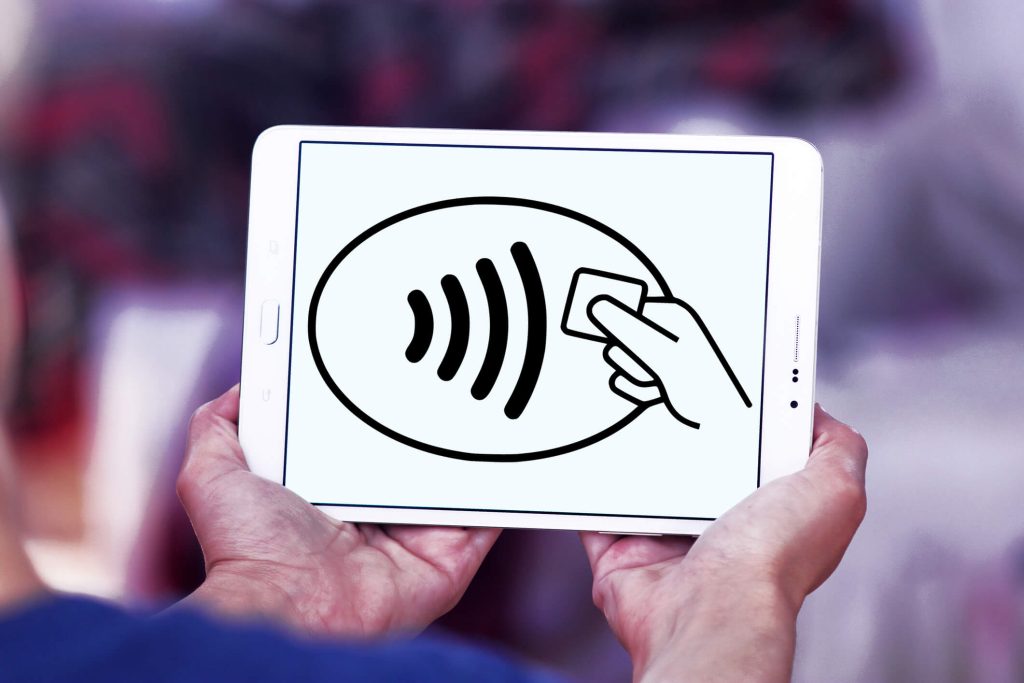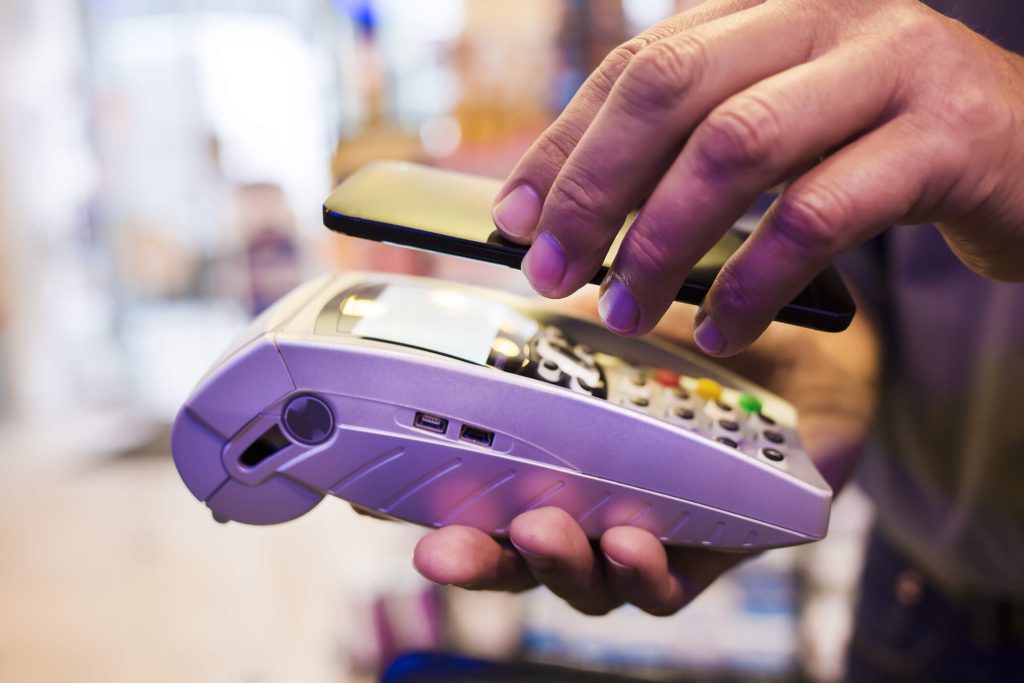In today’s digital age, contactless payments have become increasingly popular due to their convenience and efficiency. As a dental office, implementing contactless payments can not only streamline your payment processes but also enhance the overall patient experience. This comprehensive guide will walk you through the steps of implementing contactless payments in your dental office, from understanding the concept to educating your patients.
Understanding Contactless Payments
Before diving into the implementation process, it is crucial to have a clear understanding of what contactless payments are and how they work. Contactless payments, also known as tap-and-go or near-field communication (NFC) payments, allow customers to make transactions by simply tapping their payment card or mobile device on a contactless-enabled terminal.
What are Contactless Payments?

Contactless payments utilize radio frequency identification (RFID) or NFC technology to enable secure and quick transactions. When a customer taps their card or mobile device on a contactless terminal, the payment information is transmitted wirelessly, eliminating the need for physical contact or swiping.
Contactless payments can be made using various methods, including contactless credit or debit cards, mobile wallets (such as Apple Pay, Google Pay, or Samsung Pay), and wearable devices (such as smartwatches or fitness trackers).
Benefits of Contactless Payments in a Dental Office
Contactless payments have become increasingly popular across various industries due to their convenience and speed, and the dental sector is no exception. The adoption of contactless payment methods in dental offices can offer numerous benefits, enhancing both patient experience and practice management. Here are several advantages of incorporating contactless payments into a dental office:
1. Improved Hygiene
In a dental office, hygiene is paramount. Contactless payments minimize the need for physical contact, reducing the transmission of germs between patients and staff. This is especially critical in a post-pandemic world, where heightened awareness about hygiene practices can influence a patient’s choice of healthcare providers.
2. Enhanced Patient Convenience
Contactless payments streamline the checkout process, allowing patients to make payments quickly and effortlessly. This convenience is particularly appreciated by patients who are in a hurry or prefer not to handle cash and checks. It can also be a boon for elderly patients or those with mobility issues who find traditional payment methods cumbersome.
3. Faster Transactions
Contactless payments are generally faster than traditional methods like cash or credit card swiping. This efficiency helps reduce the time patients spend at the payment desk, which can lead to shorter wait times and a more streamlined patient flow through the office. Faster transactions also free up staff to focus on other important tasks, improving overall office efficiency.
4. Increased Security
Contactless payment technologies often come with advanced security features that protect against fraud. Technologies such as tokenization and encryption ensure that patient payment information is securely processed, giving both the practice and the patients peace of mind regarding the safety of their data.
5. Reduced Administrative Burden
With contactless payments, dental offices can reduce the burden of handling and processing cash. This not only decreases the risk of errors but also lowers the time spent on daily cash management tasks such as counting cash, making bank deposits, and reconciling transactions. Automated receipts and simplified accounting are additional benefits that can streamline administrative procedures.
6. Boosted Patient Satisfaction
Offering modern payment solutions can significantly enhance patient satisfaction. Patients appreciate the convenience and flexibility of using their preferred payment methods, which can include mobile wallets like Apple Pay or Google Wallet. A positive payment experience can increase the likelihood of patients returning and recommending the practice to others.
7. Enhanced Brand Image
Implementing the latest technology solutions, such as contactless payments, can improve a dental office’s brand image, portraying it as modern and technologically adept. This can be particularly appealing to younger demographics and tech-savvy individuals who value digital solutions.
Preparing Your Dental Office for Contactless Payments
Before implementing contactless payments, it is essential to assess your current payment system, upgrade your payment infrastructure, and train your staff on contactless payment procedures.
Assessing Your Current Payment System
Start by evaluating your existing payment system to identify any limitations or areas for improvement. Consider factors such as the types of payment methods accepted, transaction processing time, and integration capabilities with your practice management software.
If your current system does not support contactless payments, it may be necessary to upgrade your payment infrastructure.
Upgrading Your Payment Infrastructure
To accept contactless payments, you will need to invest in contactless payment terminals or POS systems that are compatible with the chosen payment methods. Contact your payment processor or merchant services provider to discuss the available options and choose a solution that best fits your dental office’s needs.
Ensure that the payment terminals are equipped with NFC technology and comply with the necessary security standards, such as Payment Card Industry Data Security Standard (PCI DSS) compliance.
Training Staff on Contactless Payment Procedures
Properly training your staff on contactless payment procedures is crucial to ensure a smooth transition and efficient utilization of the new payment method. Conduct training sessions to familiarize your staff with the contactless payment terminals, including how to process transactions, troubleshoot common issues, and address patient inquiries.
Choosing the Right Contactless Payment Solution
Selecting the right contactless payment solution for your dental office is a critical step in the implementation process. Consider factors such as available contactless payment providers, security and compliance features, and pricing and transaction fees.
Researching Available Contactless Payment Providers
Research and compare different contactless payment providers to find the one that best suits your dental office’s requirements. Look for providers that offer seamless integration with your practice management software, reliable customer support, and a user-friendly interface.
Consider reading reviews and testimonials from other dental professionals to gain insights into the experiences of their existing clients.
Evaluating Security and Compliance Features
Security should be a top priority when choosing a contactless payment solution. Ensure that the provider adheres to industry-standard security protocols, such as encryption and tokenization, to protect sensitive payment data.
Additionally, verify that the provider is compliant with relevant regulations, such as PCI DSS, to ensure the highest level of data security.
Comparing Pricing and Transaction Fees
Compare the pricing structures and transaction fees of different contactless payment providers to find the most cost-effective solution for your dental office. Consider factors such as setup fees, monthly fees, transaction fees, and any additional charges for hardware or software upgrades.
Implementing Contactless Payments in Your Dental Office
Once you have chosen the right contactless payment solution, it is time to implement it in your dental office. This involves setting up contactless payment terminals, integrating them with your practice management software, and thoroughly testing the system.
Setting Up Contactless Payment Terminals
Install the contactless payment terminals at strategic locations in your dental office, such as the reception desk or checkout counter. Ensure that the terminals are easily accessible to both your staff and patients.
Follow the manufacturer’s instructions to set up the terminals, including connecting them to your network and configuring any necessary settings.
Integrating Contactless Payments with Practice Management Software
Integrating your contactless payment solution with your practice management software can streamline your payment processes and improve efficiency. Consult with your payment provider and practice management software vendor to ensure seamless integration.
This integration allows for automatic synchronization of payment data, simplifying reconciliation and reducing manual data entry.
Testing and Troubleshooting the System
Before fully implementing contactless payments, thoroughly test the system to identify and resolve any potential issues. Conduct test transactions using different payment methods to ensure that the terminals are functioning correctly and that the payment data is accurately recorded.
Train your staff on troubleshooting common issues and provide them with the necessary resources to address any technical difficulties that may arise.
Educating Patients on Contactless Payments
To ensure a smooth transition for your patients, it is essential to educate them about the benefits and procedures of contactless payments. Creating awareness through marketing channels, providing clear instructions and FAQs, and addressing patient concerns and questions are key steps in this process.
Creating Awareness through Marketing Channels
Utilize various marketing channels, such as your dental office’s website, social media platforms, and email newsletters, to create awareness about the availability of contactless payments. Highlight the benefits of contactless payments, such as convenience, speed, and enhanced security.
Consider creating engaging content, such as blog posts or videos, that explain the concept of contactless payments and how they can benefit your patients.
Providing Clear Instructions
Provide clear instructions to your patients on how to use contactless payments in your dental office. Display signage at the reception desk and near the contactless payment terminals, explaining the steps involved in making a contactless payment.
Create a dedicated section on your website or patient portal that includes frequently asked questions (FAQs) about contactless payments. Address common concerns, such as security, compatibility, and available payment methods.
Addressing Patient Concerns and Questions
Be prepared to address patient concerns and questions regarding contactless payments. Train your staff to provide accurate and helpful information to patients who may have reservations or require further clarification.
Ensure that your staff is knowledgeable about the security measures in place to protect patient payment data and can confidently address any concerns related to privacy or fraud.
Frequently Asked Questions
To further assist your patients, address some frequently asked questions about contactless payments in a dental office.
Q.1: Are contactless payments secure?
Yes, contactless payments are secure. They utilize advanced encryption and tokenization technologies to protect sensitive payment data. Additionally, contactless payments eliminate the need for physical contact or swiping, reducing the risk of card skimming or fraud.
Q.2: What types of contactless payment methods can be used?
Contactless payments can be made using various methods, including contactless credit or debit cards, mobile wallets (such as Apple Pay, Google Pay, or Samsung Pay), and wearable devices (such as smartwatches or fitness trackers). Patients can choose the method that is most convenient for them.
Q.3: Can contactless payments be integrated with insurance claims?
Yes, contactless payments can be integrated with insurance claims. By integrating your contactless payment solution with your practice management software, you can automatically synchronize payment data with insurance claims, simplifying the billing and reimbursement process.
Q.4: How can I ensure a smooth transition for my patients?
To ensure a smooth transition for your patients, educate them about the benefits and procedures of contactless payments. Create awareness through marketing channels, provide clear instructions and FAQs, and address any concerns or questions they may have.
Q.5: What if a patient doesn’t have a contactless payment method?
If a patient does not have a contactless payment method, you can still accept traditional payment methods, such as cash or card swiping. However, encourage patients to consider adopting contactless payment methods for a more convenient and hygienic payment experience.
Conclusion
In conclusion, implementing contactless payments in your dental office can bring numerous benefits, such as increased efficiency, improved patient experience, and enhanced security. By understanding the concept of contactless payments, preparing your office, choosing the right solution, and educating your patients, you can successfully integrate this modern payment method into your practice. Remember to prioritize security and compliance, and regularly update your systems to stay ahead in the ever-evolving world of technology. Embrace the convenience and efficiency of contactless payments to elevate your dental office’s payment processes and provide a seamless experience for your patients.
